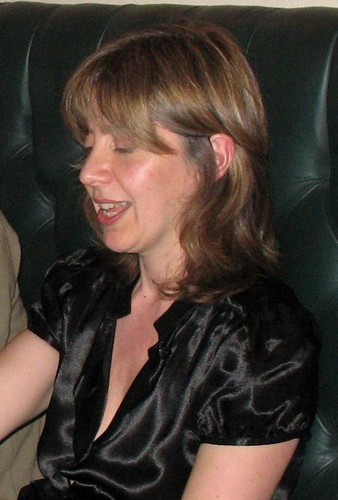Photo by Laurie Duggan
One of the joys of poetry is coming across the work of somebody first rate whose writing you had not previously known. This was true when I was 16, first coming across William Carlos Williams’ The Desert Music in the Albany Public Library & having my first “aha experience” with poetry, something that had eluded me previously reading Robert Frost,
In the past I’ve written about the difficulty I sometimes have hearing British poetry on the page &, reading blue light, I tried to recall the last time I a book of poems by a Brit made me excited about line breaks. My immediate thought was Basil Bunting, but that was over 40 years ago. That’s obviously an overstatement – Lee Harwood, Thomas A. Clark & Tom Raworth all come to mind (tho that’s not necessarily what I focus on in Tom’s work) – but not as much of an overstatement as I wish it was. Actually, thinking about the last time I had the same reaction to the line breaks of an American poet – perhaps Joseph Massey¹ – I realize that this is not a great moment for thinking about line breaks (for which I may be partly to blame), and that the people who are doing really interesting work here are in fact going against the grain to a degree we may not realize.
When blue light falls clearly is one of those books. It contains what the author characterizes as the “first 16 of a cyanometric work in progress,” which immediately poses the questions when will it be complete? And when can I get the entire volume? I sure hope that
Watts also characterizes the project as “a series of even and odd number sequences,” which is to say that these 16 poems don’t proceed 1 to 16, but rather with all the even numbers first, then the odd. There is a considerable difference betwixt the two. Using an epigram to invoke Barbara Guest (“Blue enters later”), Watts proceeds as if following Guest’s airy strategies of the abstract lyric (a mode of poetry she could be said to have invented), but what results feels quite different:
when it came down
did it reach as far as
your skin
and mine
that blue light
opening
in absence
of air
would catch you
gaping for
the next
so blue never is
present
how it marks
Set apart thus, individual lines hover, framed as tho each were a text in itself. At the same time, this piece is a small portrait indirectly told. A lot is implicit here, permitting a content term (noun is too neutral for what’s going on) like skin to carry a lot of the narrative. Indeed, the strategy seems to be to having the telling replicate the quality of light to the degree imaginable. Soundwise, the poem seems very aware of its vowels, tho it leads more by how carefully the p / b sounds are placed (never more than one to a line, and not at all until the fifth line).
Here is the poem that, if the numbers indicated order in this book, would have preceded the poem above:
pale cold light
morning
shrinks
back
taut gum skin
will
switch in distance
sounds of water
in beds and journeying
footfall
pours from her
mouth
or through interiors
what she is
a
floe
The equation of a woman with a “floe” is the sort of assertion that ought nowadays to be difficult to sustain. It suggests the hokiest sorts of metaphors, not all of which are woman-friendly. But instead of reading “1” first, it appears here halfway through the book, after “16,” the last of the even-numbered sequence. In context, after dealing with poems explicitly about breathing, obsessed with the qualities of air, especially including its invisibility in the immediate environs while deep blue when observed at a great distance, one reads interiors very differently & likewise the last couplet. The sum is one of the cagiest demonstrations of the parsimony principle in poetry I’ve come across. What at first glance could have been read as a variation on the old romantic trope woman is a fluid is instead a portrait of two people on a brisk morning. There ought to be a name for this effect, some verbal equivalent not of trompe l’oeil exactly, but a more Escher-like effect, where what you see on the page palpably is not what you get.
I find such attention to detail – and such respect for the reader’s intelligence – thoroughly invigorating. This probably shouldn’t have been news to me – one can find a fair amount of Watts’ work on the web, including “Zeta Landscape” in How2, an excerpt from Occasionals in Signals, and something entirely different, alphabetise, a downloadable volume that is as much art book as it is “prose poem chronicle.” It’s a complete blast. Charles Alexander, recounting a trip of his own to England two years ago, calls Watts’ work “a revelation,” & that makes absolute sense to me.
¹ Joel Chace’s reading at Robins Books May 19 makes me want to look at his linebreaks again as well.






